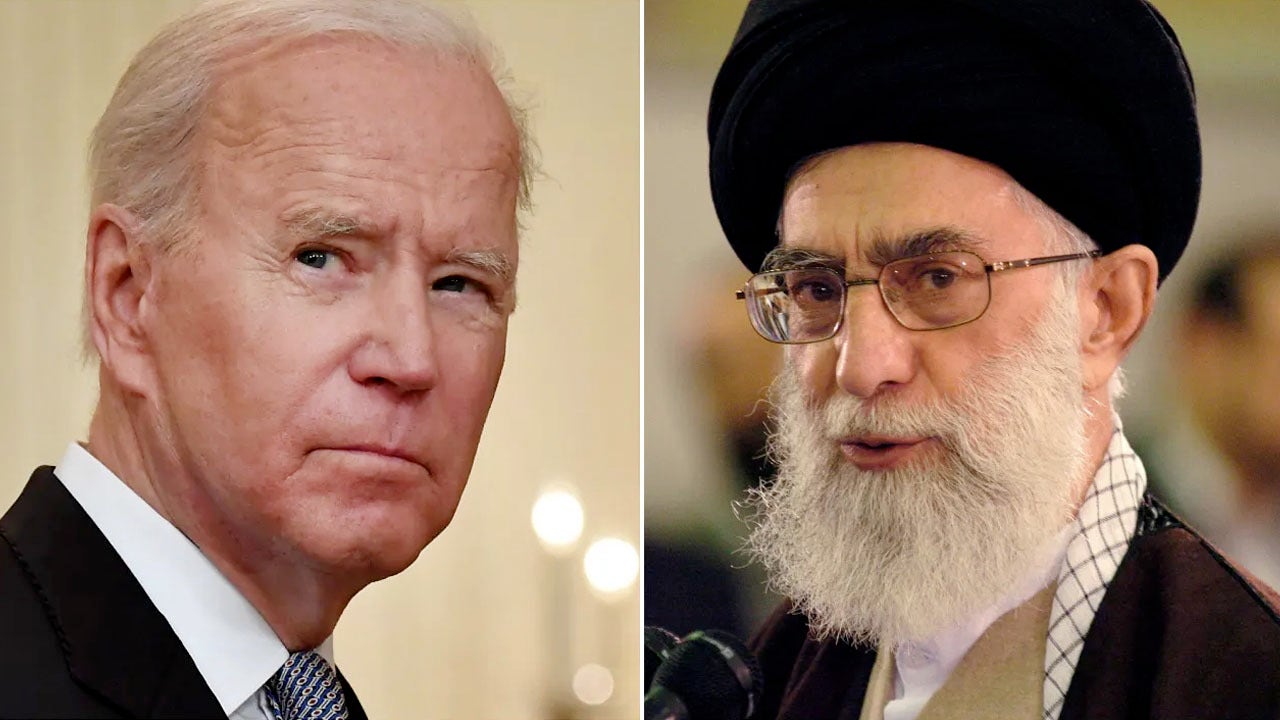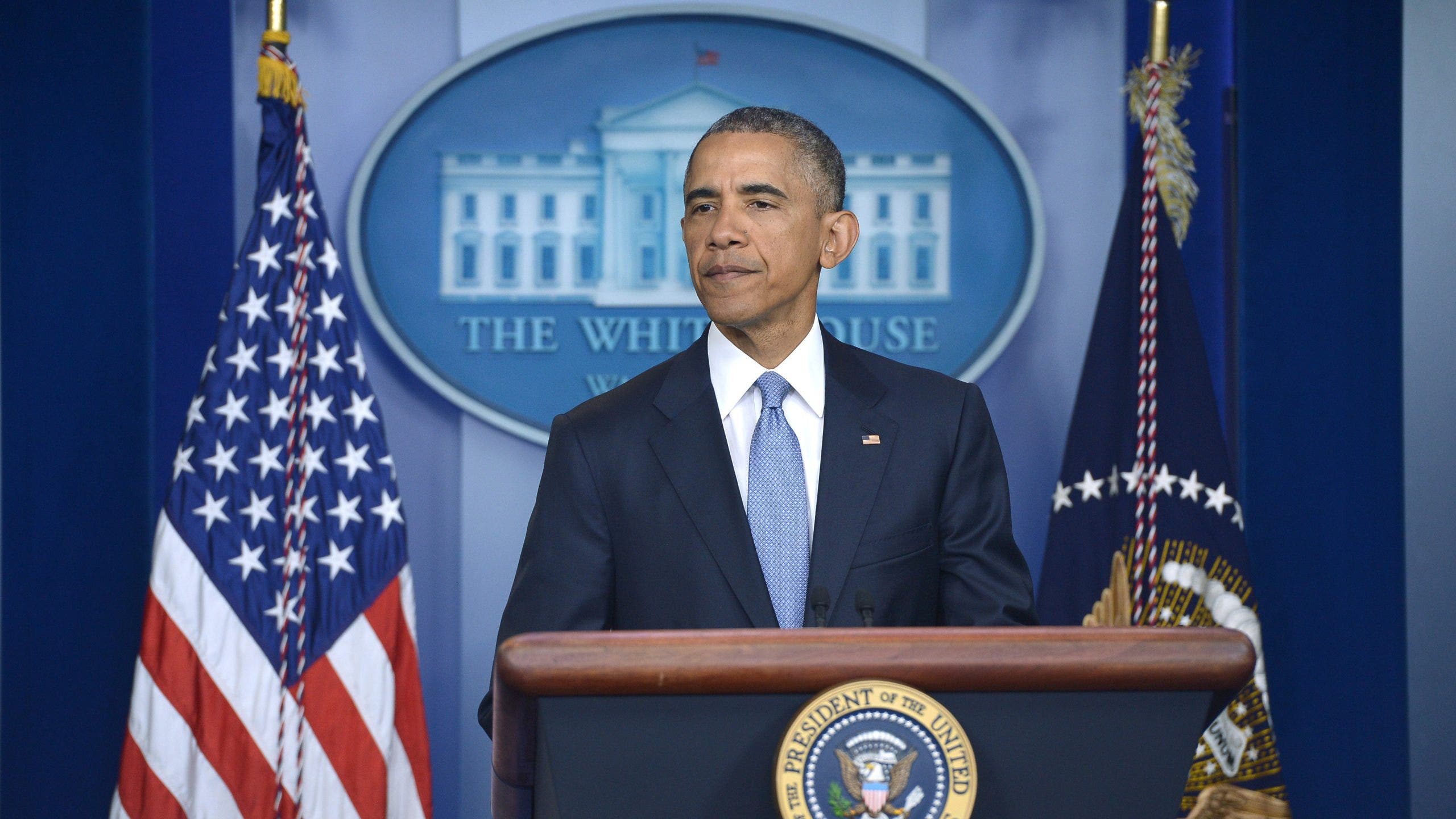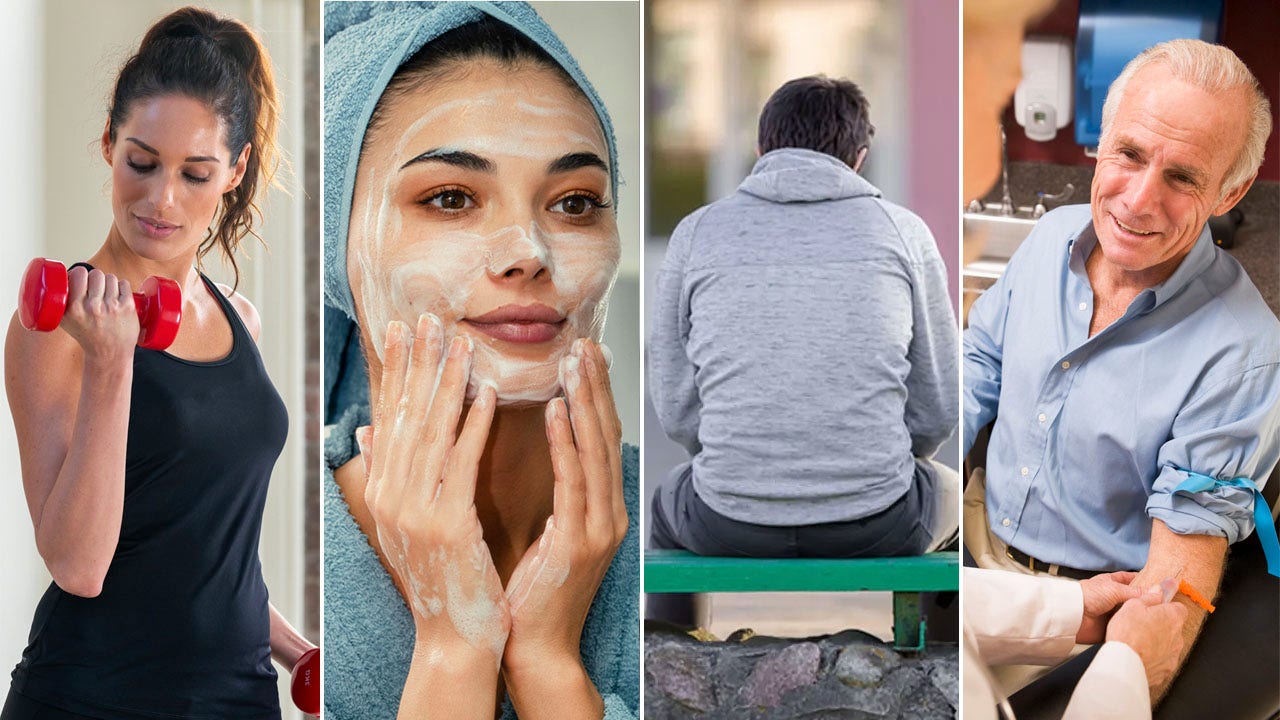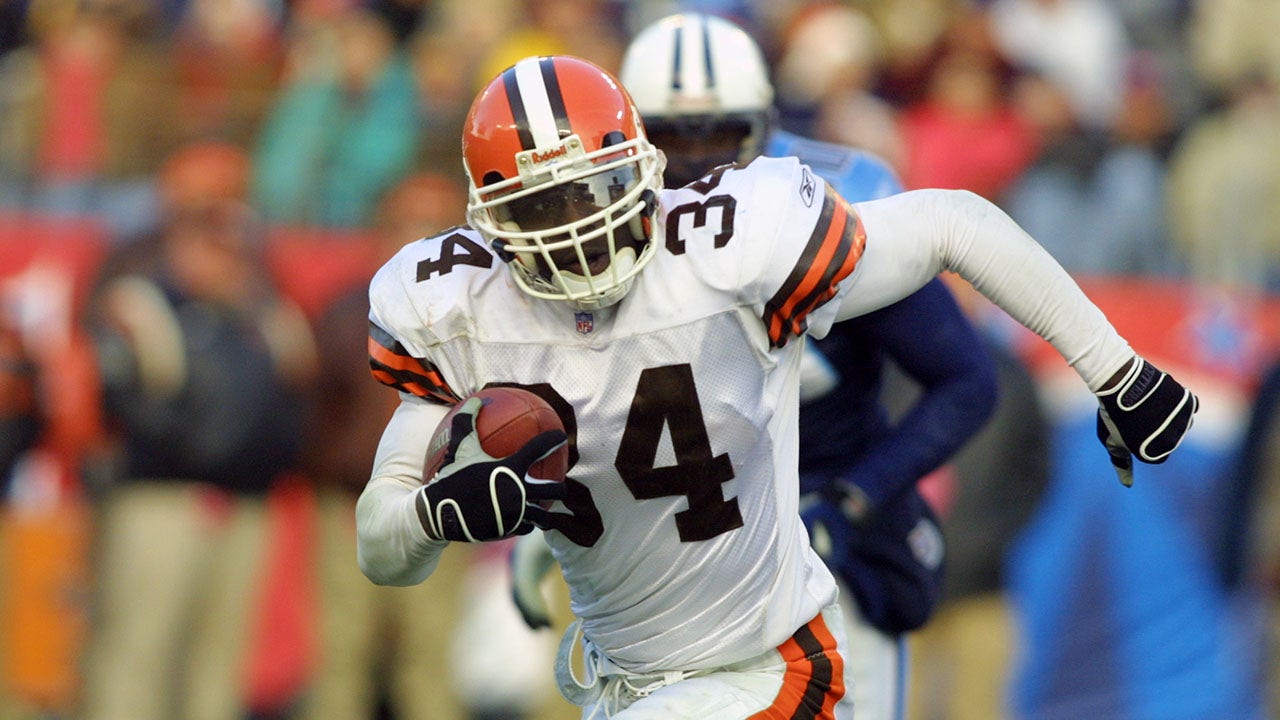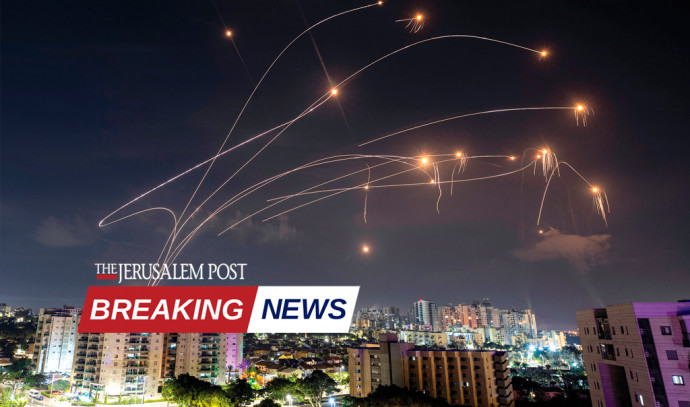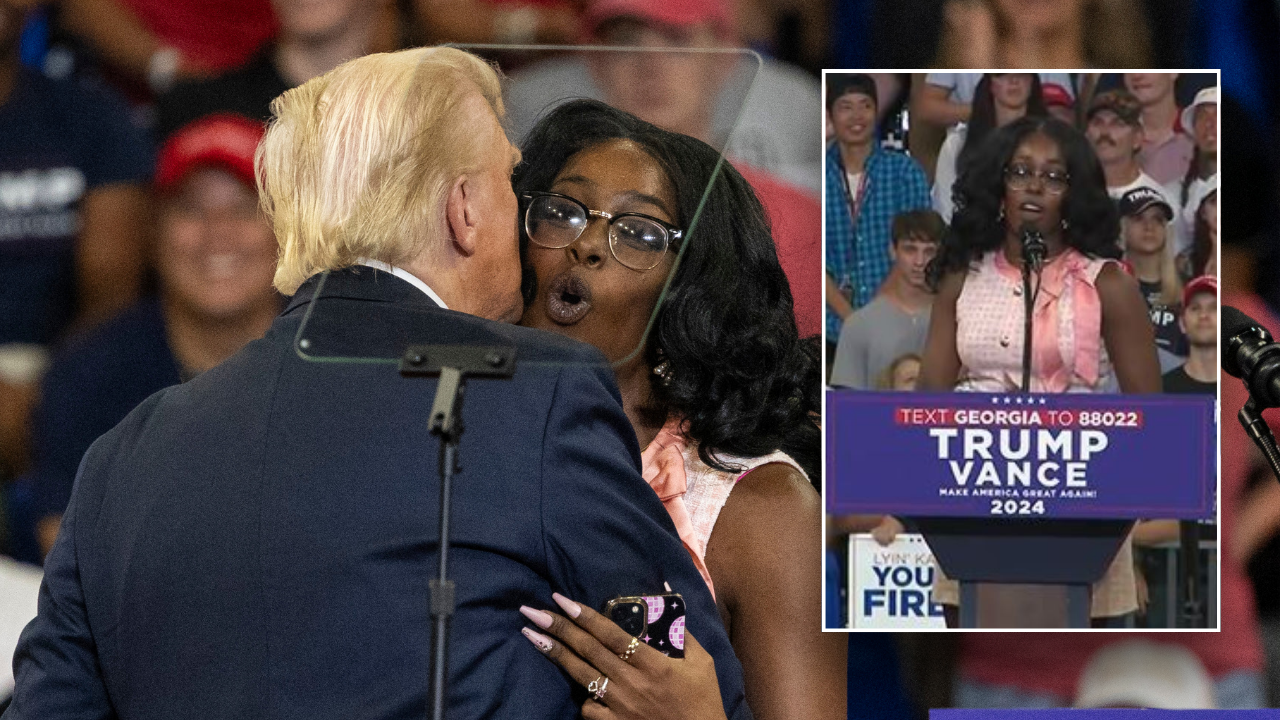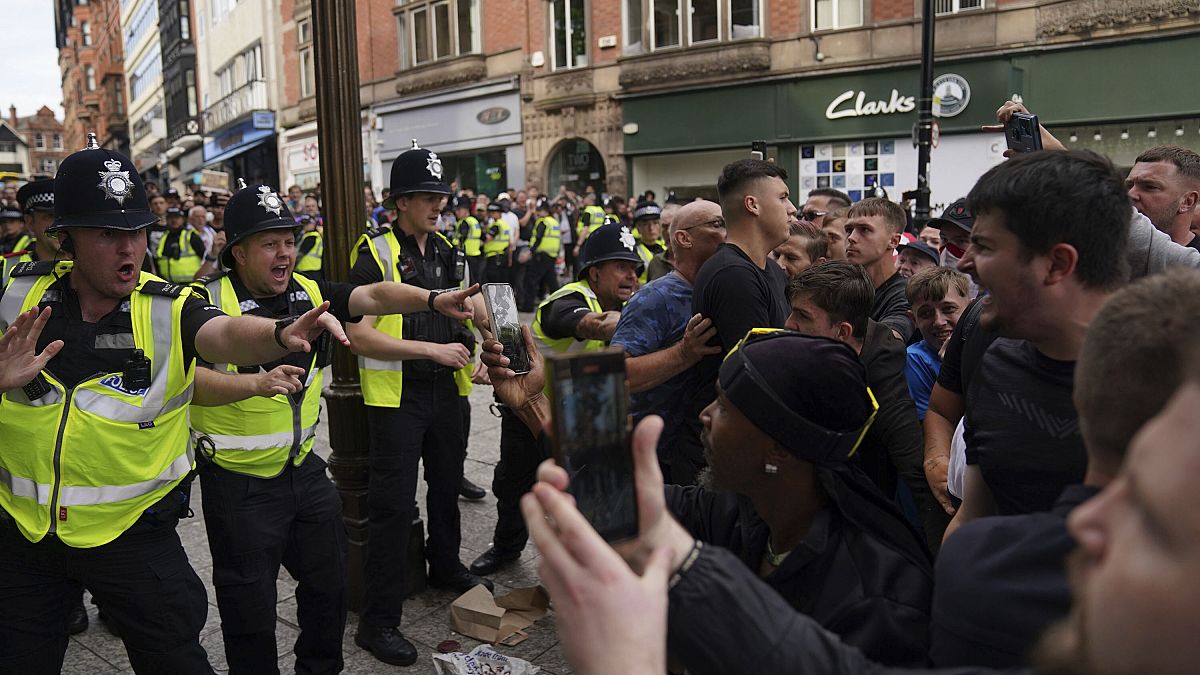Indianapolis, IN
Indianapolis police shootings highest in years. What is going on?

Video shows Indianapolis police shoot armed man in back after traffic stop
Gary Dwayne Harrell was fatally shot by Indianapolis Metropolitan Police Department officer Douglas Correll after a traffic stop Aug. 3, 2023.
Indianapolis Metropolitan Police Department, Indianapolis Star
Black ministers had a strong demand: Indianapolis’ top cop must resign.
The Concerned Clergy of Indianapolis said they lost faith in Police Chief Randal Taylor after a Black motorist stopped for a traffic violation was fatally shot running away from an officer Aug. 3.
Six more people have been shot by city police in the eight weeks that followed — and a total of 11 in the first nine months of the year. All but one of them are Black.
The repeated use of deadly force has invoked apathy for some people, who accept it as unavoidable in this era of increased gun ownership and strained relations between residents and the people sworn to protect them.
Members of the Indianapolis Metropolitan Police Department, who have been shot twice this year on city streets, say they also have had enough.
“We are fed up with it. The community should be fed up with it,” Assistant Chief Chris Bailey said after the April shooting.
What’s driving the rash of police shootings this year isn’t clear. Police, politicians and community advocates have differing opinions. Experts say a reason can’t be known without scrutinizing each case.
“You would have to analyze the data to see what, if any, patterns emerge from these shootings,” said Jon Shane, professor of police policy and practice at John Jay College of Criminal Justice.
While debate continues about what may be driving the uptick, the fact remains Indianapolis police officers have killed people this year at a level not seen since 2016.
Chief Taylor told IndyStar in an interview he cannot recall a time in his 36-year career in law enforcement that so many police shootings have happened in such a short period.
“It’s definitely concerning,” he said.
Fewer police shootings in other cities
Of the 11 people Indianapolis police have shot in the first nine months of the year, six have died. In 2022, police shot four people, one fatally ― although officers fired their guns in six additional incidents but did not strike anyone.
“It’s a very rare occurrence,” Stephanie Whitehead, a criminal justice professor at Indiana University East, said about the frequency of shootings since August.
Not included in the total are three people who were shot by state troopers in the city. Within a week in May, Indiana State Police troopers shot two people in separate incidents. In February, a state trooper shot a man being tracked in a gun and drug investigation.
More people have been shot by Indianapolis police this year than by other agencies in cities with roughly similar population sizes.
San Francisco police, for example, have shot six people since 2022.
Indianapolis surpassed Columbus, Ohio, a much bigger city, where police have shot 10 people so far this year. Six were shot last year, according to the police department.
Indianapolis also stands out compared to several smaller Midwestern cities.
Louisville police have shot six people this year and three in 2022. Milwaukee police have shot almost as many people in 2022 and 2023 as Indianapolis police did this year alone.
In Minneapolis, police shot three people last year. There have been no officer-involved shootings so far this year, according to the police department.
Grasping for an explanation
Absent a closer look at each case, Shane, the John Jay College professor, said the increase of police shootings in recent weeks may be coincidental.
“More likely than not what happened is, you just had a spate of difficult situations arising all at the same time,” Shane said.
But data show police killings have generally increased in recent years when compared with the past decade, according to the nonprofit Mapping Police Violence. The increase appears to be continuing well into 2023, the organization said in its database.
The deadly use of force has particularly impacted Black Americans. Black people were three times as likely to be killed by police than white people in the United States last year, the nonprofit stated.
Rep. Earl Harris Jr., D-East Chicago, and chair of the Indiana Black Legislative Caucus, said the group is “heartbroken” over the numerous police shootings, and noted Black Americans face higher rates of injury or death when interacting with officers.
Permitless carry, illegal guns blamed
Harris also faulted the state’s permitless carry law. It has undermined an officer’s ability to quickly determine whether a person is legally carrying, he said in a statement.
“Police officers must assume anyone they pull over or interact with is armed and must be prepared to defend themselves and their fellow officers if necessary,” Harris said.
Past coverage: ‘We’re all at greater risk.’ How the end of handgun permits could impact violent crime
State Police Superintendent Douglas Carter cited similar concerns about officer safety to lawmakers while the constitutional carry legislation was still in bill form. The law has been on the books just over a year, and its impact on crime has not been measured.
What police are seeing on the streets is a continuous flow of illegal guns, they say.
Bailey, the assistant chief, pointed to a record number of firearms seized this year by the Indiana Crime Guns Task Force, a group of state and federal officials and law enforcement officers from Marion and surrounding counties that was created in 2021 to trace guns tied to violent crimes.
“Lots of people have guns. Lots of people are doing bad, violent things, and our officers and troopers put themselves in harm’s way each and every day to take them off the streets so that they don’t harm anybody else,” Bailey told reporters Sept. 26 after 42-year-old Darmon Graves Jr. was killed in a shootout with members of the task force in the city’s latest police shooting.
Chief Taylor gave a similar remarks to IndyStar, attributing the recent police shootings to the decisions people made during their interactions with officers.
“It’s concerning that we would have people that are out there that would have weapons and point weapons at officers,” he said. “I’m really concerned with the decisions people are making as it relates to their action with officers and the poor choices they’re making, more than anything.”
Officers are also increasingly facing guns fixed with illegal devices that essentially transform the firearm to function like a machine gun.
In January, three Indianapolis officers shot 22-year-old Christian Myers after police say he fired at them while running away in a neighborhood along Binford Boulevard. Myers was suspected of shooting the car of his child’s mother the night before. When police apprehended him, they found a Glock switch nearby.
Link to mental health crisis
One fatal police shooting in August brought another layer of concern by the community about officer use of force against those experiencing mental health crises.
In that case, police responded to reports about a man making threats and encountered 40-year-old Kendall Darnell Gilbert waving a machete around a neighborhood. Gilbert’s family told police he struggled with mental illness after officers had been at the home several times that weekend. In each case before the deadly encounter, officers determined he was not a threat.
Roughly 2.5 hours in, police officials said Gilbert struck an officer’s shield with the machete after being shocked with a stun gun. Lt. John Perkins, a 28-year veteran, fired his gun, striking him. Gilbert died at a hospital.
A former police/community liaison raised questions over the violent conclusion after witnessing and livestreaming the standoff.
“I didn’t see a reason for this to end bad,” Gregory Meriweather told IndyStar at the time. “I didn’t see a reason for him to end up with a bullet in him.”
It wasn’t the first time community members have expressed frustration over how the city handles mental health-related calls for help.
In April 2022, Herman Whitfield III died after being tased and handcuffed face down by Indianapolis police officers while experiencing a mental health crisis. His death spurred calls from the community for changes in the city’s response to people struggling with mental illness.
Since then, the city has created teams of medical professionals who will respond to certain 911 calls if a patient is in crisis and no weapons are involved. The group’s aim is to lower the chances of a deadly police encounter.
Three months in, the clinician response team’s early days of work are starting just as the spree of police shootings began.
Clinician-led team: Indy’s new 911 response team hopes to save lives with therapy, not police
Shootings at center of police department budget talks
Outcry from community members about the use of deadly force by officers came to a head in September at a city budget hearing for the police department.
Some residents have opposed increasing the department’s budget, arguing that other types of first responders are better equipped to handle mental health calls.
Bailey has previously said police have shouldered mental health-related calls for years, estimating only 20% of the police department’s calls are related to actual law enforcement issues, and the remaining 80% stem from issues not built for officers.
The city has continuously poured millions into the police department since 2016, the last time police shootings reached close to this year’s levels. The proposed 2024 budget set another record for Indianapolis’ police, topping $323 million for the department.
Police leaders and other groups said they need more resources to address the department’s staffing shortage and violent crime. The city’s budget funds 1,743 police department employees, with federal grant dollars allowing for 100 more. But as of mid-August, the department only had 1,542 sworn officers.
Further placing a strain on staffing, albeit a small one, is the requirement for officers to go on leave for 30 days after a deadly use of force. After the 30 days are up, the officer are put in an administrative job or recommended for termination.
Before they’re returned to the force, they must pass a mental evaluation and executive staff will review the shooting. The police chief will then decide whether to return the officer to their regular job or keep them on administrative duty while the investigation continues.
As of Sept. 26, nine Indianapolis police officers were on administrative leave or duty because of police shootings.
Among the officers who have been identified in police shootings this year, they average just shy of 11 years of experience on the force. The lowest was three. The highest, 28 years.
Mayoral candidates weigh in
Indianapolis’ mayoral candidates have opposite views on whether the police shortage is contributing to the number of officer shootings.
Democratic Mayor Joe Hogsett, whose tenure is now marred by some of the highest numbers of police shootings in recent history, said there’s “no evidence” staffing challenges have caused the increase. He said in a statement that each person shot by police this year has been armed, which he says reflects “the high level of danger IMPD officers face when entering these circumstances.”
Hogsett’s Republican challenger, Jefferson Shreve, said the officer shortage is to blame, along with the mayor.
“This record number of (fatal) police action shootings is emblematic of the chaos that we are still wrestling with in parts of our city,” he said. “It’s another metric that reflects that our officers are stretched thin.”
Whether the shootings were an appropriate use of force or not will be determined by the review system, Shreve added.
When asked if he supports Taylor’s resignation, Shreve said, “I think that’s got to be the sitting mayor’s decision.” Hogsett, who took office in 2016 and hired Taylor, reiterated his support for the chief.
Shreve said that he thinks the 2022 law eliminating the permit requirement to carry handguns in Indiana played a role in the rise in fatal police shootings but is not solely to blame.
“We took a tool away,” Shreve said, because police cannot check if a gun is registered. “It’s a tool I would not have taken away. That’s not the only reason.”
Chief says accountability needed on all sides
Police shootings account for a tiny fraction of the 600,000 calls officers have responded to this year, Taylor said.
“Everyone wants to hold the police accountable, and I’ve got no problem with that,” Taylor said. “But at some point, the community has got to find a way to hold their own selves accountable for their actions as well.”
Taylor has, at least publicly, ignored calls for his resignation.
Reporters Ko Lyn Cheang, John Tufts and Jake Allen contributed to this article.
Contact reporter Sarah Nelson at 317-503-7514 or sarah.nelson@indystar.com. IndyStar reporter Kristine Phillips can be reached at (317) 444-3026 or at kphillips@indystar.com.

Indianapolis, IN
BLQ+ Pride Fest: A celebration of Indy's Black LGBTQ+ community

INDIANAPOLIS — A celebration of Black LGBTQ+ pride was on full display on Monument Circle Saturday.
The BLQ+ Pride fest brought out hundreds of people as an opportunity to celebrate people of color who identify as LGBTQ+.
The celebration had vendors, queer health support organizations and entertainment.
WRTV
According to the Human Rights campaign, over 80 percent of black LGBTQ+ youth say they have experienced homophobia or transphobia in the black community.
Organizers hope the event serves as a reminder to queer people of color that they have a community in the city of Indianapolis.
WRTV

“Black pride is important because black LGBTQ people need safe spaces to feel loved and celebrated in the State of Indiana,” President of Indiana Pride of Color Belinda Drake said.
The Human Rights campaign also says that racism is an issue in the LGBTQ+ community.
Nearly 75 percent of black queer youth say they have experienced racism in the queer community.
Indiana Pride of Color is working to improve the quality of life for Indiana LGBTQ+ BIPOC communities.
Learn more about the Indiana Pride of Color organization, here.
WATCH | Organizations work to ‘break the stigma’ amid Mental Health Awareness Month
Breaking the stigma of mental health during Mental Health Awareness Month
Indianapolis, IN
BLQ+ Pride Summer Fest returns

INDIANAPOLIS (WISH) — After a five-year hiatus, the BLQ+ Pride Summer Fest event was held on Monument Circle on Saturday.
The event featured several shopping, entertainment, and eating opportunities.
“They are doing testing, we have food vendors, we have alcohol for the adults, we have folks who are selling merchandise,” said Belinda Drake, president of Indiana Pride of Color. “We have the ice cone shop for the kiddos, too.”
The day is created to honor and celebrate Black, Queer joy in the city and state overall.
One of the vendors who came out to sell items and celebrate alongside the community is Nakeya Harris, the owner of Meraki Mobile Boutique. Her shop carries women’s clothing items, with a specific focus on statement items with bright colors. She also carries jewelry and additional staples.
“I enjoy people expressing themselves and being free, so I wanted to be a part of that,” Harris said.
Local LifeJourney Church was also in attendance at the event. They aim to extend a safe space for worship to anyone interested.
“Today we are trying to reach out to communities of color and just say we have a welcoming space where people can come and be themselves
Though it is the first event of its kind since 2019, the Summer Fest is set to return to Monument Circle next year, and for many years to come.
Indianapolis, IN
Todd’s Take: Home Cooking? Indiana Needs To Clean Its Big Ten Tournament Plate In Indy
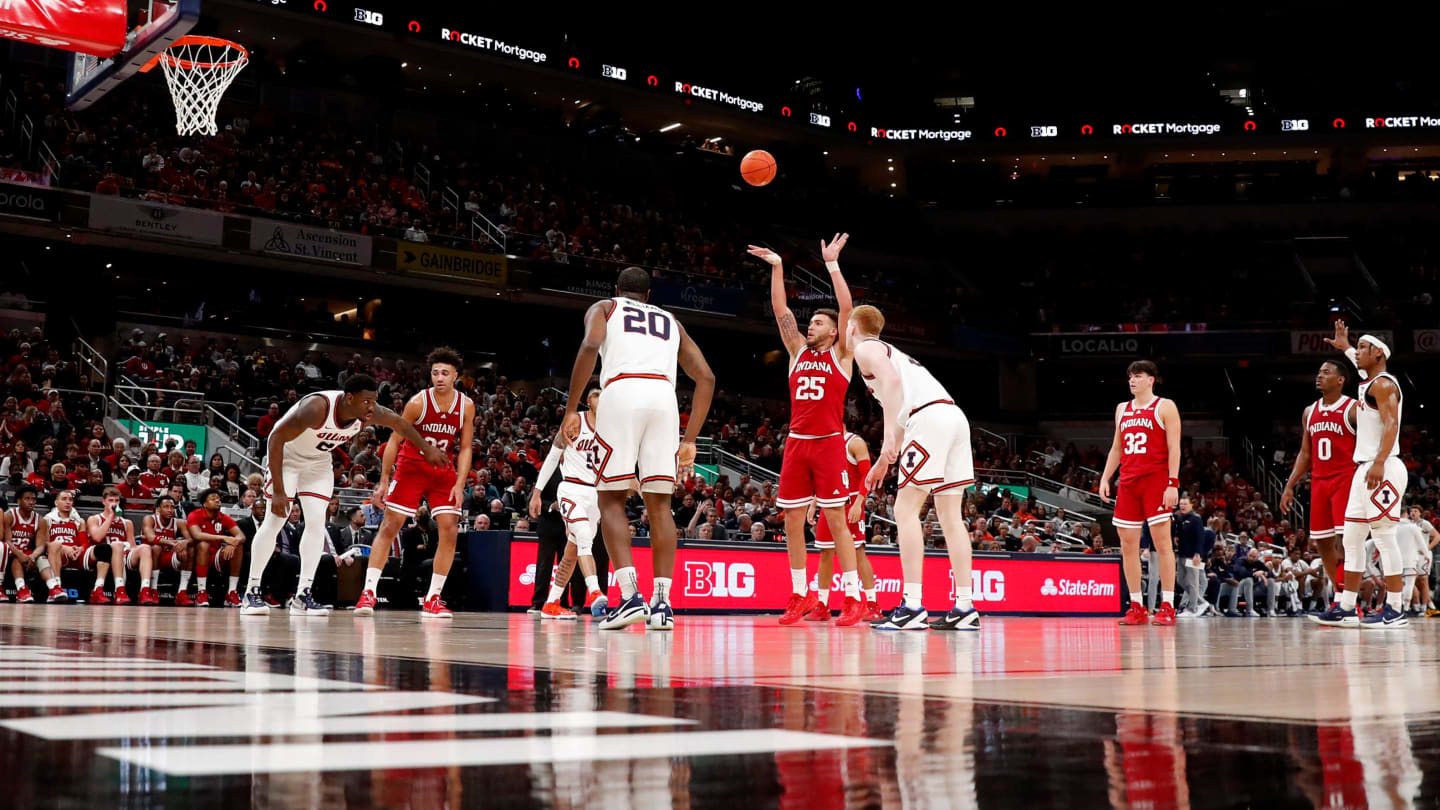
BLOOMINGTON, Ind. – On Wednesday, white smoke finally hovered over Big Ten headquarters in Rosemont, Ill., as the conference revealed its future plans for the Big Ten Men’s and Women’s Basketball Tournaments.
If you’re a Big Ten-mad basketball fan who resides in Indiana, you’re happy. Gainbridge Fieldhouse in Indianapolis will host both the men’s and women’s tournaments twice each between 2025 and 2028. The Fieldhouse will host both tournaments in 2025.
Spanning all 3 time zones across the Big Ten!
Here are the hosts for the 2025-2028 Men’s and Women’s Basketball Tournaments: https://t.co/lDiAEA5oVI#B1GMBBT l #B1GWBBT pic.twitter.com/clkRFmWP7O
— Big Ten Conference (@bigten) July 31, 2024
In theory, you’d think having the Big Ten Tournament right in the heart of Hoosier country would create a home-court advantage for the cream-and-crimson. You’d think that Fieldhouse moments would be part of the collective memories of candy-striped fans statewide.
But let’s partake in a short exercise. What is Indiana’s greatest Big Ten Tournament moment in the Circle City in men’s basketball? I’ll give you a moment to think about it.
That’s right, dig deep. Keep mining the recesses of your mind. Why do I hear crickets?
As I clear the cobwebs in my own head, in terms of good things that happened to Indiana in the Big Ten Tournament in Indy, I can only think of the 2022 run when the Hoosiers saved their NCAA Tournament bacon with a 2-1 performance.
Included were two of the three games Indiana has won by five points or less in Big Ten Tournament games played in Indianapolis – a five-point victory over Michigan and a two-point thriller against top-seeded Illinois. (The other was a 2006 five-point victory over Wisconsin.)
Past that? The cupboard is bare. There are infamous moments that jump to mind, such as former Hoosier Luke Recker’s heart-shattering buzzer-beater for Iowa in a 2002 semifinal in the first Big Ten Tournament played in Indy. Soon-to-be-outgoing coach Archie Miller was lustily booed in the tournament’s lone appearance at Lucas Oil Stadium in 2021.
There is infamy that had nothing to do with Indiana, such as the bizarre 2020 Big Ten Tournament game against Nebraska, where it seemed the entire nation seemingly coalesced during that game to the grim reality that COVID-19 was about to alter all of our lives.
Only in Indiana’s checkered Big Ten Tournament history could the Hoosiers win and not advance.
Past that, Indiana has largely entered and exited anonymously in the Circle City. The Hoosiers’ all-time Big Ten Tournament record in Indy is 7-11. Indiana has beaten a grand total of one ranked foe (No. 16 Illinois, 2022) among those seven victories.
The Hoosiers have had six one-and-done appearances at the Fieldhouse. Even if you exclude the 2008-10 post-probation period when the Hoosiers were mired in losing, that still leaves three other instances where cream-and-crimson tails were firmly planted between legs in front of the home folks.
The women don’t escape scrutiny, either. Indiana’s women have been better than the men – Heather Cassady and Jill Chapman led the Hoosiers to their lone Big Ten Tournament championship at the Fieldhouse in 2002. Teri Moren coached the 2022 team to the championship game at the Fieldhouse. But apart from that? Not much considering the women’s tournament has been played in Indianapolis far more often than the men’s tournament.
Indiana’s women are 19-24 all-time in the Big Ten Tournament in Indianapolis and have 12 one-and-done appearances.
None of this is for lack of enthusiasm at the gate. Every Indiana Big Ten Tournament game I’ve been to in Indianapolis has been a Hoosier Nation takeover. Indiana fans always show up, it’s what they do, but in Indy, it’s almost never reciprocated with on-court success.
So why does Indiana struggle in the Big Ten Tournament in Indy? Part of it is Indiana’s uneven seasons in general since the tournaments began in 1995 (women) and 1998 (men), but even good Hoosiers teams have stumbled in Indy.
The 2016 Big Ten regular season men’s champions are one example as they went one-and-out. Indiana’s 2021 Elite Eight women’s team didn’t win in Indy, either.
Where the men are concerned, perhaps part of it is historical indifference. Bob Knight was famously opposed to the tournament’s very existence and that attitude has possibly settled in among fans who recall his stance.
Truth be told, I don’t think I’ve heard many (any?) Indiana fans put an emphasis on the Big Ten Tournament, apart from seasons where the Hoosiers had to win to get a NCAA Tournament berth. The vibe is that this is a program that has bigger fish to fry, in particular, the elusive sixth banner.
Well, sometimes reality slaps you in the face with the truth that you have to walk before you can run. Indiana’s .395 winning percentage in the Big Ten Tournament is only ahead of Northwestern’s among schools that have been in the conference since the inception of the tournament. Let that wash over you.
That dubious distinction alone should spur Indiana fans into giving this tournament a bit more emotional emphasis, but there’s something to be said for the enthusiasm a tournament run generates, too.
I was there for the Purdue men’s win in 2023 in Chicago as well as the Iowa women’s and Illinois men’s wins in 2024 in Minneapolis. The Big Ten Tournament championship didn’t define any of their seasons, but it undoubtedly added some spice.
For the 2024-2025 season, Indiana’s men’s and women’s teams will both be capable of making noise at the Fieldhouse. The in-arena support will be there. Home cooking for the Hoosiers will be served up piping hot.
It’s long past time for the Hoosiers to clean their Big Ten Tournament plate in their home state.
-

 Mississippi5 days ago
Mississippi5 days agoMSU, Mississippi Academy of Sciences host summer symposium, USDA’s Tucker honored with Presidential Award
-

 Politics1 week ago
Politics1 week agoRepublicans say Schumer must act on voter proof of citizenship bill if Democrat 'really cares about democracy'
-
World6 days ago
More right wing with fewer women – a new Parliament compendium
-

 News1 week ago
News1 week agoVideo: Kamala Harris May Bring Out Trump’s Harshest Instincts
-

 Politics1 week ago
Politics1 week agoTrump announces to crowd he 'just took off the last bandage' at faith event after assassination attempt
-

 World1 week ago
World1 week agoIsrael says Hezbollah crossed ‘red line’, strikes deep inside Lebanon
-
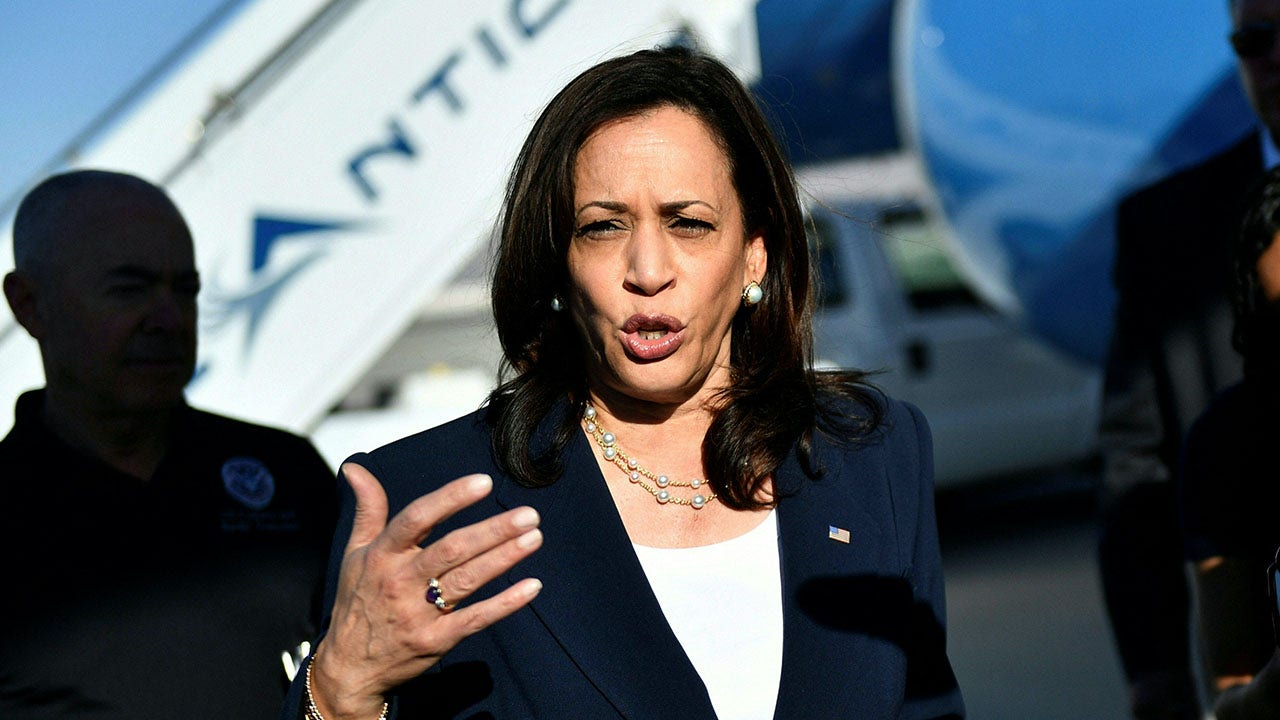
 Politics1 week ago
Politics1 week agoHarris failed to combat ‘root causes’ of illegal immigration, former Border Patrol union chief says
-

 Movie Reviews1 week ago
Movie Reviews1 week agoDeadpool & Wolverine Movie Review: Ryan Reynolds brings the house down in this bloody spectacle

/cdn.vox-cdn.com/uploads/chorus_asset/file/23952205/HT009_facebook_00011.jpg)
